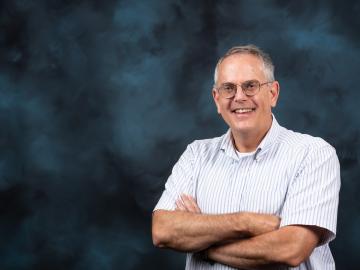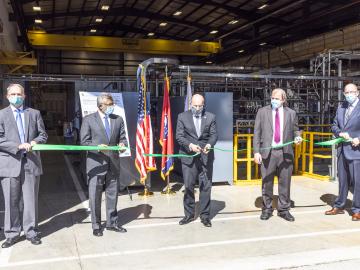
Filter News
Area of Research
- Advanced Manufacturing (1)
- Biology and Environment (70)
- Computational Biology (2)
- Computer Science (3)
- Electricity and Smart Grid (3)
- Energy Science (56)
- Functional Materials for Energy (1)
- Fusion and Fission (22)
- Fusion Energy (12)
- Materials (47)
- Materials for Computing (9)
- National Security (14)
- Neutron Science (16)
- Nuclear Science and Technology (13)
- Quantum information Science (8)
- Sensors and Controls (1)
- Supercomputing (39)
News Type
News Topics
- (-) Biology (108)
- (-) Coronavirus (35)
- (-) Fusion (58)
- (-) Grid (59)
- (-) Molten Salt (8)
- (-) Physics (49)
- (-) Polymers (26)
- (-) Quantum Science (63)
- 3-D Printing/Advanced Manufacturing (110)
- Advanced Reactors (31)
- Artificial Intelligence (102)
- Big Data (71)
- Bioenergy (92)
- Biomedical (59)
- Biotechnology (29)
- Buildings (62)
- Chemical Sciences (60)
- Clean Water (31)
- Composites (26)
- Computer Science (175)
- Critical Materials (19)
- Cybersecurity (23)
- Education (2)
- Emergency (4)
- Energy Storage (84)
- Environment (186)
- Exascale Computing (54)
- Fossil Energy (7)
- Frontier (49)
- High-Performance Computing (105)
- Hydropower (12)
- Irradiation (3)
- Isotopes (48)
- ITER (8)
- Machine Learning (56)
- Materials (120)
- Materials Science (118)
- Mathematics (12)
- Mercury (10)
- Microelectronics (3)
- Microscopy (46)
- Nanotechnology (45)
- National Security (73)
- Neutron Science (125)
- Nuclear Energy (103)
- Partnerships (43)
- Quantum Computing (41)
- Security (22)
- Simulation (57)
- Software (1)
- Space Exploration (24)
- Statistics (3)
- Summit (50)
- Transportation (82)
Media Contacts

A multi-institutional team, led by a group of investigators at Oak Ridge National Laboratory, has been studying various SARS-CoV-2 protein targets, including the virus’s main protease. The feat has earned the team a finalist nomination for the Association of Computing Machinery, or ACM, Gordon Bell Special Prize for High Performance Computing-Based COVID-19 Research.

Chuck Kessel was still in high school when he saw a scientist hold up a tiny vial of water and say, “This could fuel a house for a whole year.”

NellOne Therapeutics has licensed a drug delivery system from the Department of Energy’s Oak Ridge National Laboratory that is designed to transport therapeutics directly to cells infected by SARS-CoV-2, the virus causing COVID-19.

Planning for a digitized, sustainable smart power grid is a challenge to which Suman Debnath is using not only his own applied mathematics expertise, but also the wider communal knowledge made possible by his revival of a local chapter of the IEEE professional society.
A collaboration between the ORNL and a Florida-based medical device manufacturer has led to the addition of 500 jobs in the Miami area to support the mass production of N95 respirator masks.

Growing up in Florida, Emma Betters was fascinated by rockets and for good reason. Any time she wanted to see a space shuttle launch from NASA’s nearby Kennedy Space Center, all she had to do was sit on her front porch.

Department of Energy Under Secretary for Science Paul Dabbar joined Oak Ridge National Laboratory leaders for a ribbon-cutting ceremony to mark progress toward a next-generation fusion materials project.

Geoffrey L. Greene, a professor at the University of Tennessee, Knoxville, who holds a joint appointment with ORNL, will be awarded the 2021 Tom Bonner Prize for Nuclear Physics from the American Physical Society.

Four research teams from the Department of Energy’s Oak Ridge National Laboratory and their technologies have received 2020 R&D 100 Awards.



